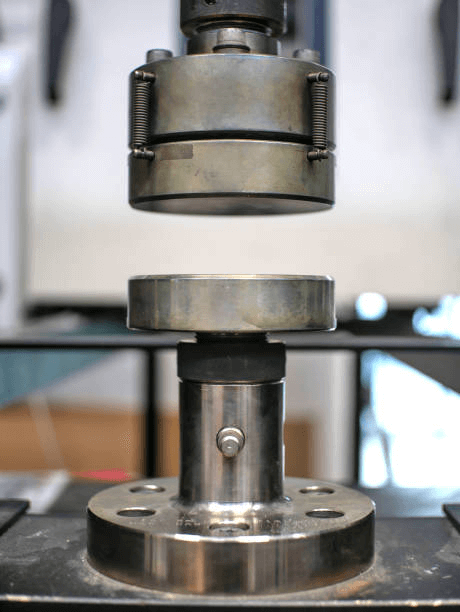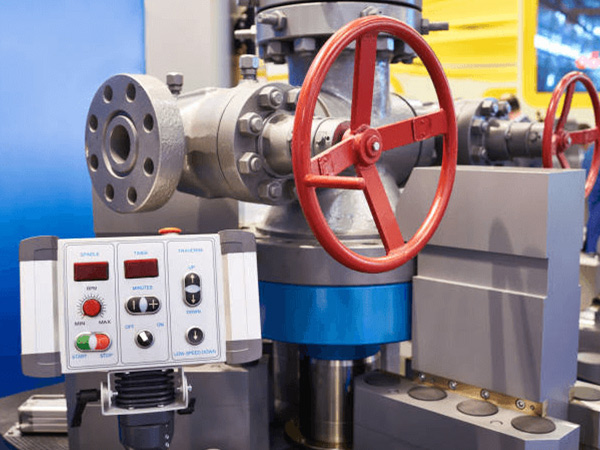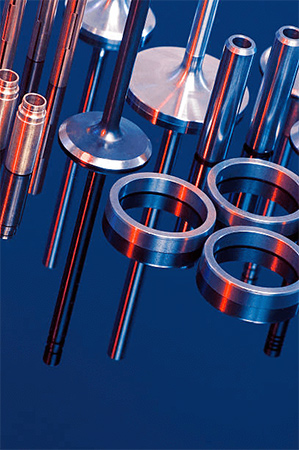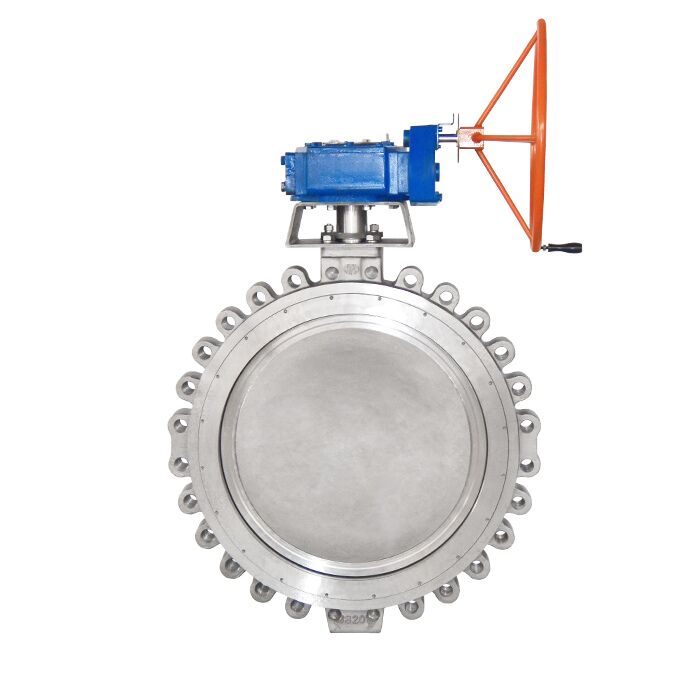Valves, just like engines, pumps, and compressors are essential components of various mechanical systems. The valve’s performance depends on the proper functioning of its components, including the valve seat, which functions by ensuring proper sealing between the valve and the valve body.

Choosing the right valve seat material is crucial in maintaining optimal valve performance and preventing any system downtime. The valve seat material selection depends on various factors, such as the fluid or gas being handled, temperature, pressure, valve’s design, and the reliability of the industrial valve company.
The selection process requires careful consideration of these factors to ensure that the valve seat material can withstand the operational conditions and prevent any system failures.
In this valve seat material selection guide, we will provide insights into different options available in the market, their properties, pros, and cons.
What is a Valve Seat

A valve seat is a ring-shaped component placed in the valve body, which provides a sealing surface for the valve’s closure member, ensuring that the valve is tightly closed and prevents fluid or gas leakage. It is typically made from a durable material that can withstand high temperatures, pressures, and corrosive environments. They are used in various types of valves, including industrial ball valves, butterfly valves, gate valves, globe valves, check valves, etc.
Various Types of Valve Seat Materials
The valve seat material is crucial in determining the valve’s durability, reliability, and performance, and the selection process requires contacting the valve supplier for careful consideration of different types of materials commonly used for making valve seats.
Virgin PTFE
Virgin PTFE (Polytetrafluoroethylene) is a synthetic fluoropolymer that is known for its excellent chemical resistance, low friction, and high-temperature (260°C) capability. It is non-reactive, non-toxic, and has a low friction coefficient, which makes it suitable for applications where low wear, low friction, and chemical resistance are required.
Virgin PTFE in valve seats can be used in the chemical processing, pharmaceuticals, food and beverage, and semiconductor industries, where their excellent chemical resistance and non-reactivity are required.
Pros:
- Excellent chemical resistance to a wide range of corrosive chemicals.
- Low coefficient of friction, which makes it self-lubricating and reduces wear & tear.
- High-temperature capability.
Cons:
- Low tensile strength and impact resistance, which makes it prone to cracking and deformation under stress.
- Limited thermal conductivity, which can result in overheating.
- High cost compared to other materials.
Reinforced PTFE
Reinforced PTFE is a composite material made by adding fillers or reinforcements to Virgin PTFE to improve its mechanical properties. The addition of fillers enhances the tensile strength, compressive strength, wear resistance, and thermal conductivity of PTFE. The most common types of fillers used in Reinforced PTFE include glass fiber, carbon fiber, and bronze.
Reinforced PTFE valve seats can be used in the chemical processing, oil and gas, and power generation industries, where their enhanced mechanical properties, chemical resistance, and thermal conductivity are required. The type and amount of fillers can affect the properties of the material, so careful selection and testing is required for specific applications.
Pros:
- Enhanced mechanical properties, such as tensile strength, compressive strength, wear resistance, and dimensional stability.
- Good chemical resistance to a wide range of corrosive chemicals, similar to Virgin PTFE.
- High-temperature capability, similar to Virgin PTFE.
- Improved thermal conductivity, which reduces the risk of overheating and thermal degradation.
Cons:
- Reduced electrical insulation properties due to the addition of fillers.
- More expensive than Virgin PTFE due to the additional cost of fillers.
TFM
TFM (tetrafluoroethylene modified with a small amount of perfluoropropyl vinyl ether) is a modified version of PTFE (Polytetrafluoroethylene), with better mechanical properties and thermal stability. The addition of perfluoropropyl vinyl ether to the PTFE molecule creates a more amorphous structure, which increases the flexibility of the polymer chains and enhances its mechanical properties.
TFM valve seats are used in the chemical processing, pharmaceutical, and food and beverage industries, where their excellent chemical resistance, high-temperature capability, and low coefficient of friction are required.
Pros:
- Enhanced mechanical properties, such as tensile strength, compressive strength, and wear resistance, compared to PTFE.
- Good chemical resistance to a wide range of corrosive chemicals.
- High-temperature capability.
- Low coefficient of friction, making it useful for applications where low friction is desired.
Cons:
- May be more expensive than other materials due to its enhanced properties.
- May not be suitable for applications where electrical insulation properties are required.
- Requires careful handling during machining due to its relatively low thermal conductivity.
PEEK
PEEK (Polyether ether ketone) is a high-performance thermoplastic polymer with excellent mechanical, thermal, and chemical properties. It has a high melting point of around 340°C (644°F) and can withstand continuous use at high temperatures up to 250°C (482°F).
PEEK valve seats are used in the aerospace, automotive, and oil and gas industries, where their excellent mechanical properties, high-temperature capability, and chemical resistance are required.
Pros:
- Excellent mechanical properties, such as high strength, stiffness, and impact resistance.
- Good chemical resistance to a wide range of chemicals, including acids, bases, solvents, and fuels.
- High-temperature capability, allowing it to withstand continuous use at high temperatures up to 250°C (482°F).
- Low coefficient of friction, making it useful for applications where low friction is desired.
- Good electrical insulation properties, making it suitable for electrical and electronic applications.
Cons:
- PEEK is a relatively expensive material compared to other thermoplastics.
- It can be difficult to machine due to its high melting point and toughness.
- PEEK may require careful handling and storage to prevent degradation over time due to moisture and other environmental factors.
DELRIN
DELRIN is a high-performance thermoplastic polymer with excellent mechanical properties and low friction. It is a type of acetal, also known as polyoxymethylene (POM). DELRIN has a high melting point of around 175°C (347°F) and can withstand continuous use at temperatures up to 100°C (212°F).
DELRIN valve seats are used in the automotive, aerospace, and consumer goods industries, where their excellent mechanical properties, low coefficient of friction, and dimensional stability are required.
Pros:
- Excellent mechanical properties, such as high strength, stiffness, and impact resistance.
- Low coefficient of friction, making it useful for applications where low friction is desired.
- Good dimensional stability, meaning it maintains its shape and size under different environmental conditions, such as temperature and humidity.
- Good chemical resistance to a wide range of chemicals, including acids, bases, and alcohols.
- Good electrical insulation properties, making it suitable for electrical and electronic applications.
Cons:
- DELRIN has a lower temperature capability than other materials, such as PEEK and TFM.
- It may not be suitable for applications where high-temperature resistance is required.
- DELRIN may not be suitable for applications where it may come in contact with strong oxidizing agents, as it can be degraded by them.
UHMW PE
Ultra-High Molecular Weight Polyethylene (UHMW PE) is a high-performance thermoplastic polymer with excellent mechanical and chemical properties. It has a high molecular weight, which contributes to its high strength and toughness. UHMW PE has a relatively low melting point of around 130°C (266°F) and can withstand continuous use at temperatures up to 80°C (176°F).
UHMW PE valve seats are used in the chemical processing, food processing, and medical industries, where their excellent mechanical properties, low coefficient of friction, and chemical resistance are required.
Pros:
- Excellent mechanical properties, such as high strength, toughness, and abrasion resistance.
- Low coefficient of friction, making it useful for applications where low friction is desired.
- Good chemical resistance to a wide range of chemicals, including acids, bases, and solvents.
- Good electrical insulation properties, making it suitable for electrical and electronic applications.
- Self-lubricating property can reduce wear and tear in mechanical applications.
Cons:
- UHMW PE has a relatively low temperature capability compared to other materials, such as PEEK and TFM.
- It may not be suitable for applications where high-temperature resistance is required.
- UHMW PE may not be suitable for applications where it may come in contact with strong oxidizing agents, as it can be degraded by them.
Metal
Metal is a widely used material for making valve seats due to its excellent mechanical properties, high temperature capability, and good corrosion resistance. Metals commonly used for valve seats include stainless steel, bronze, brass, and titanium, among others.
Metal valve seats are used in the chemical processing, oil and gas, and aerospace industries, where their excellent mechanical properties, high temperature capability, and good corrosion resistance are required.

Pros:
- Excellent mechanical properties, such as high strength, hardness, and toughness.
- High temperature capability, making them suitable for high-temperature applications.
- Good corrosion resistance, making them suitable for use in harsh environments.
- Good electrical conductivity, making them suitable for electrical and electronic applications.
Cons:
- Metals can be relatively heavy, which may be a disadvantage in some applications.
- They can be more expensive than other materials, such as plastics and elastomers.
- Some metals can be prone to corrosion under certain conditions, such as exposure to certain chemicals or saltwater environments.
- They may require additional surface treatments or coatings to enhance their corrosion resistance or other properties.
50-50 Stainless Filled PTFE
50-50 stainless filled PTFE is a composite material made by combining PTFE with stainless steel particles. It’s often used by a professional butterfly valves manufacturer because of its combination of the PTFE chemical resistance and low friction coefficient with the mechanical properties of the stainless steel.
50-50 stainless filled PTFE valve seats are used in the chemical processing, food processing, and pharmaceutical industries, where their excellent chemical resistance, low coefficient of friction, and good mechanical properties are required.
Pros:
- Excellent chemical resistance to a wide range of chemicals, including acids, bases, and solvents.
- Low coefficient of friction, making it useful for applications where low friction is desired.
- Good mechanical properties, such as strength, stiffness, and wear resistance.
- Good thermal conductivity, making it suitable for applications where heat transfer is important.
- Good electrical insulation properties, making it suitable for electrical and electronic applications.
Cons:
- 50-50 stainless filled PTFE may not be suitable for high-temperature applications, as the PTFE component has a relatively low melting point.
- It may not be suitable for applications where it may come in contact with strong oxidizing agents, as the stainless steel component can be corroded by them.
- The addition of stainless steel particles may increase the cost of the material compared to virgin PTFE
Cavity Filler
Cavity filler is a type of valve seat material used in high-pressure gas applications. It is made of a soft, compressible material, typically a fluoropolymer or elastomer that is designed to fill the space between the valve seat and the metal sealing surface of the valve. This helps to prevent gas from leaking through the valve when it is in the closed position.
Cavity filler valve seats are used in high-pressure gas applications, such as natural gas pipelines and gas storage facilities, where gas leakage can have serious safety and environmental consequences.
Pros:
- Can help to prevent gas leakage through the valve when it is in the closed position.
- Soft and compressible, allowing it to conform to the irregularities of the valve seat and the metal sealing surface.
- Good chemical resistance to a wide range of gases and fluids.
- Good temperature resistance, making it suitable for high-temperature gas applications.
- Low permeability to gases.
Cons:
- May not be suitable for high-pressure liquid applications, as the material may deform or extrude under high pressure.
- May require regular inspection and maintenance to ensure that the cavity filler material is still providing a good seal.
- May require additional components, such as backup rings or anti-extrusion rings, to prevent the material from extruding under high pressure.
Viton
Viton is a type of fluoropolymer elastomer that is often used as a valve seat material in high-temperature and high-pressure applications. It is a trade name for a group of fluoroelastomers developed by the DuPont company and is known for its excellent chemical resistance, high-temperature resistance, and good compression set resistance.
Viton valve seats are used in high-temperature and high-pressure applications, such as in the oil and gas, chemical processing, and aerospace industries.
Pros:
- Excellent chemical resistance to a wide range of chemicals, including acids, bases, and solvents.
- High-temperature resistance up to 204°C (400°F), making it suitable for high-temperature applications.
- Good compression set resistance, maintaining sealing properties over time.
- Low gas permeability, reducing the risk of gas leakage through the valve.
- Good mechanical properties, such as strength, flexibility, and tear resistance.
Cons:
- Viton can be expensive compared to other elastomer materials.
- May not be suitable for low-temperature applications, as the material can become brittle at low temperatures.
- Can be sensitive to some organic solvents, which can cause swelling or degradation of the material.
Conclusion
The material used to make the valve seat has a huge part in playing in the sealing functionality of the valve. There are different types of valve seat materials with each of them having their properties and preferred applications. Using a material for an application that’s not best for can compromise the performance of the valve.
In this valve seat material selection guide above, we’ve explained the commonly used materials. However, sometimes they seem to be identical. At Dombor Valve, we will educate you on the distinction between them and provide you with the best valve seat solution needed for your project.

We only use materials that are safe and eco-friendly to contribute to the sustainability of the environment. And all our materials and products are certified by the CE, ISO, and EA. You can contact us to get started.









